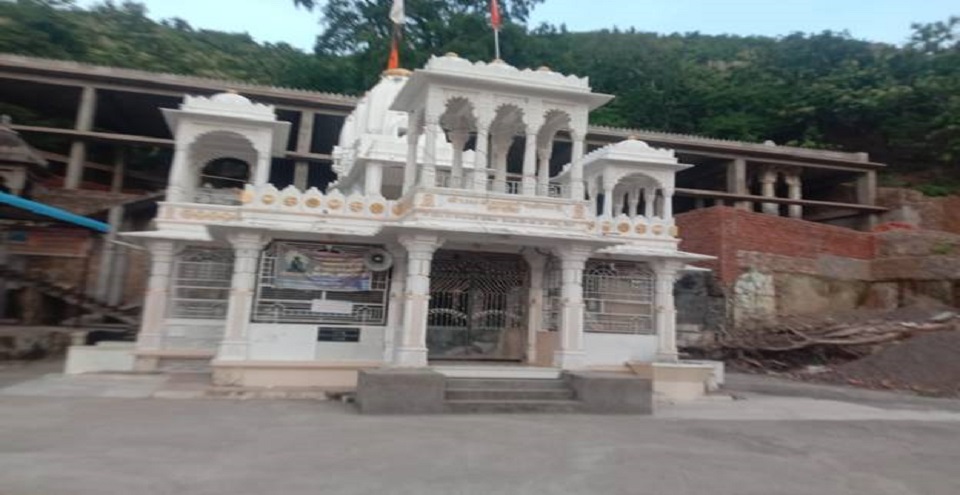
Nagfanji Temple: An Ancient Gem in Dungarpur
Nagfanji Temple, located in the Dungarpur district of Rajasthan, India, is a lesser-known but historically significant Hindu temple dedicated to Lord Shiva. This ancient temple is revered for its architectural beauty, spiritual significance, and historical value. It stands as a testament to the rich cultural and religious heritage of the region.
Historical and Spiritual Significance
The Nagfanji Temple is dedicated to Lord Shiva, one of the principal deities in Hinduism, known as the destroyer and transformer among the Trimurti (the Holy Trinity of Hindu gods). The temple’s history is interwoven with local legends and the architectural styles of ancient Rajasthan.
Key Highlights of the Temple’s Significance:
Devotion to Lord Shiva: The temple is dedicated to Lord Shiva, who is worshipped here in his various forms. Devotees visit the temple to seek blessings, offer prayers, and participate in rituals dedicated to Shiva.
Historical Importance: The temple is an example of ancient Rajasthani architecture and offers insights into the region’s historical and religious practices. Its construction reflects the craftsmanship and religious dedication of past eras.
Cultural Heritage: Nagfanji Temple is an integral part of Dungarpur’s cultural and religious landscape, representing the enduring traditions and devotional practices of the local community.
Architectural Features
Traditional Design:
- The Nagfanji Temple features traditional Rajasthani architecture, characterized by its intricate carvings, ornate pillars, and detailed artwork. The design reflects the architectural style prevalent during its period of construction.
Main Sanctum:
- The central sanctum (garbhagriha) houses the primary deity, Lord Shiva, often depicted in a traditional form. The sanctum is the focal point for worship, where devotees offer their prayers and perform rituals.
Intricate Carvings:
- The temple is adorned with detailed carvings and sculptures depicting various Hindu deities, mythological scenes, and geometric patterns. These carvings contribute to the temple’s aesthetic and spiritual atmosphere.
Courtyard and Pillars:
- The temple complex includes a spacious courtyard surrounded by intricately carved pillars. The courtyard provides a serene environment for communal prayers and religious activities.
Religious Practices and Festivals
Daily Rituals: The Nagfanji Temple conducts daily rituals and poojas (prayer ceremonies) dedicated to Lord Shiva. Devotees visit the temple to participate in these rituals, which include offerings, chanting of hymns, and worship of the Shiva lingam (symbolic representation of Shiva).
Major Festivals: The temple celebrates major Hindu festivals with special significance, including:
- Shivaratri: The festival dedicated to Lord Shiva, observed with special prayers, offerings, and nighttime vigils.
- Mahashivaratri: A significant festival that celebrates the marriage of Shiva and Parvati, marked by elaborate rituals and devotional activities.
- Diwali: The festival of lights, during which the temple is decorated, and special prayers are performed.
Local Celebrations: The temple may also observe other local and regional festivals, providing a space for the community to gather and celebrate their faith.
Practical Information for Visitors
Timing: The Nagfanji Temple is generally open to visitors throughout the day. Specific timings for rituals and ceremonies may vary, so it is advisable to check with temple officials for accurate information before planning your visit.
Dress Code: Modest attire is recommended when visiting the temple. Visitors should wear clothing that covers the shoulders and knees. Removing shoes before entering the temple premises is required.
Photography: Photography inside the temple may be restricted to maintain its sanctity. It is best to inquire about the rules upon arrival and seek permission before taking photographs.
Respect: Observing respectful behavior is essential when visiting religious sites. This includes maintaining silence during prayers, avoiding disturbances, and following any guidelines set by the temple authorities.
Getting There
Nagfanji Temple is located in Dungarpur, which is accessible by various modes of transportation:
By Road: Dungarpur is well-connected by road from major cities in Rajasthan. You can travel to Dungarpur by taxi or bus from cities such as Udaipur (approximately 110 kilometers away) or Jaipur (about 350 kilometers away). Local transport within Dungarpur can be used to reach the temple.
By Rail: The nearest railway station is Dungarpur Railway Station, which is connected to various cities. From the railway station, you can hire a taxi or use local transport to reach the Nagfanji Temple.
By Air: The nearest airport is in Udaipur, about 110 kilometers away. From Udaipur, you can travel to Dungarpur by road.
Nagfanji Temple in Dungarpur is a sacred site dedicated to Lord Shiva, offering a blend of spiritual significance and architectural beauty. With its traditional design, intricate carvings, and dedication to Shiva, the temple provides a serene environment for worship and reflection. A visit to Nagfanji Temple offers an opportunity to connect with the rich cultural and spiritual traditions of Dungarpur, making it a meaningful experience for devotees and visitors alike.
